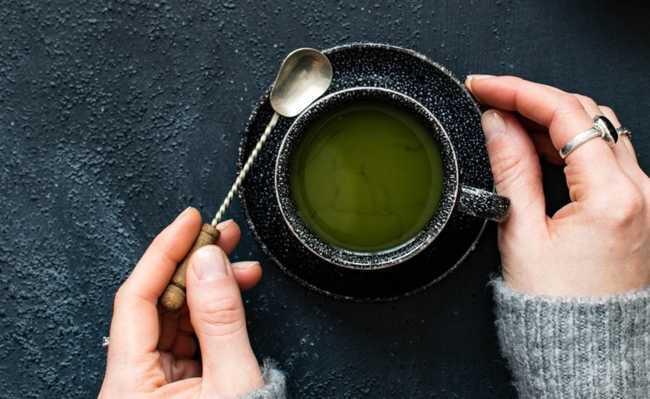Are all types of glass recyclable?
Know the specifics of each type of glass and the possibility (or not) of recycling them

Image: from Ich bin dann mal raus hier in Pixabay
Glass is an inorganic, homogeneous and amorphous substance, made on the basis of silica (sand). Its main qualities are transparency and hardness. Glass can have a varied composition depending on the property or function it will perform, such as ensuring safety or having high reflectivity.
Despite the high recycling potential of glass, not all types of glass can be reused or recycled. In general, glass made up of different substances or manufactured using its own techniques makes the recycling process very laborious, costly or even impossible to carry out.
Around the 100th century BC, glass was only used to protect individuals from the elements. Due to technological advances achieved in recent years, glass has come to play a key role in modern constructions, combining its main characteristic of transparency with other properties, such as acoustic control, thermal control, protection against the risk of injury, barrier against lightning ultraviolet, fire protection and even in interior decoration.
glass composition
The vast majority of glasses are composed of:
- 72% Silica (SiO2) - responsible for the vitrifying function;
- 14% Sodium Sulfate (Na2So4) - increases mechanical strength;
- 9% Calcium Oxide (CaO) - gives stability to the glass against attacks from atmospheric agents;
- 4% Magnesium (MgO) - confers resistance to temperature changes and increases mechanical strength;
- 0.7% Alumina (Al2O3) - responsible for mechanical strength;
- 0.3% Potassium (K2O);
Colored glasses are produced by adding dyes such as Selenium (Se), Iron Oxide (Fe2O3) and Cobalt (Co3O4) to the composition.
Types of glass
float glass
Float glass is a common, smooth and transparent glass that serves as a raw material for tempered, laminated, insulated, screen-printed and mirrors. Its composition includes silica, sodium, calcium, magnesium, potassium and alumina. It can be applied in architecture, furniture, automotive and white goods (appliances). In everyday life, this type of glass is very present in pots, flasks, perfume glasses, old windows and bottles.
In the manufacture of this type of glass, the raw materials are mixed and melted at a minimum temperature of 1000 °C. The resulting liquid is poured into a liquefied tin tank, where the material floats and spreads evenly. In this way, it starts to cool down and approaches solid form. The material, still viscous, passes through a mold, where it is cooled.
Laminated glass
Laminated glass is made up of two sheets of ordinary glass tightly bonded together by one or more layers of special plastic resin, typically polyvinyl butyral (PVB), which filters out 99% of UV rays. The manufacture of laminated glass takes place through the process of adhering PVB to glass sheets in a greenhouse. Then, the air that could have remained between the glass and the resin is removed. Later, they go through the autoclave, a machine responsible for forming the laminated glass in a treatment carried out at a pressure of 10 to 15 atm at 100 °C.
Laminated glass is considered a safety glass because, if it breaks, its fragments remain attached to the intermediate plastic film, reducing the chances of accidents. Also, in general, immediate replacement of broken glass is not necessary. This type of glass is commonly used for partitions, doors, windows, skylights, car windshields, shop windows, balconies, facades and building roofs.
Tempered glass
Tempered glass is a common glass that undergoes heat treatment (tempering) to acquire properties of hardness and mechanical resistance. Compared to common, tempered glass has five times more physical resistance, in addition to being more resistant to thermal shock, bending, fire, twisting and weight. Therefore, it is considered a safety glass, since, in case of breakage, it breaks into small pieces, reducing the risk of injury.
In the manufacturing process, this type of glass is heated in a controlled manner, raising its temperature to approximately 700°C. Afterwards, it is cooled abruptly, causing internal tensions that give the properties of hardness and mechanical resistance to the glass. Such characteristics make it very present in civil construction, in the automotive industry and also in decoration.
screen-printed glass
Screen-printed/enamelled glasses are glasses painted with ceramic enamels. There are two processes for the manufacture of screen-printed glass: the cold process or the hot process. The cold manufacturing process consists of applying ink to the glass, usually through serigraphic screens, which are cured using ultraviolet (UV) light. In the hot manufacturing process, however, ceramic enamel is applied, consisting of a glass-based flux and dyes. Then, the glass goes through the tempering process so that the enamel is melted to the glass.
In addition to being used for decoration, screen-printed glass can be applied to doors, partitions, shower stalls, table tops and furniture. In cars, it acts to block ultraviolet and infrared rays, which reduce the adhesion of the material used to fix the windows. In microwave, it protects the thermal wool that keeps the internal heat.
curved glass
It is a type of glass made by bending, which is made in a mold installed inside the bending furnace. With the gradual rise in temperature, the glass bends until it forms the shape of the mold. A large part of the curved glass manufactured in Brazil is used in the automotive area, in the windshield of automobiles. In the architectural area, curved glass is used in large buildings, facades, railings, skylights and roofs.
In the real estate and home appliance sector, it is also possible to find curved glass applied to lids, doors and panels of stoves, washing machines and dryers, microwaves and freezers.
acid glass
Acidic glass is manufactured from the application of an acidic solution to the material, which attacks its surface, making it matte. The glass can be completely or partially acidified, creating designs, textures, letters or geometric shapes. This type of glass is mainly used in partitions in residential and corporate environments, as well as in bathrooms.
Etched glass
Like acidic glass, sandblasted glass also undergoes a process that makes it matte. This process takes place by means of a sandblast or laser, which is applied to the surface of the glass, blasting it completely or partially. Furthermore, it is possible to create drawings, textures, letters or geometric shapes. Frosted glass is generally used in places where privacy is valued.
mirrored glass
The mirror is a smooth, highly polished surface capable of reflecting light and images of objects, people and animals. Mirrored glass is produced by depositing metals such as silver, aluminum or chrome on one of its sides. This metal is then protected by layers of paint, which prevent corrosion of the metallic layer and, consequently, the appearance of black stains.
- Learn more in the article "Mirror: understand what it is and why it is not recyclable"
Double or insulated glass
Double glazing, also known as insulated, is composed of two or more sheets of glass, interspersed with a chamber of dehydrated air or gases such as nitrogen and argon. It can be composed of any type of glass, which allows combining different properties, such as the mechanical resistance of tempered glass with the thermal and acoustic protection and safety of laminated glass.
The air or gas chamber is formed by a spacer profile along the entire perimeter, containing a desiccant inside to dehydrate the environment between the glasses, preventing fogging. Then, two seals are applied: the primary seal ensures that there is no gas exchange between the chamber and the environment, and the secondary seal ensures the stability of the set. Double glazing is suitable for places that need sound insulation or in buildings installed in places with high noise intensity. Double glazing is mainly used in hospitals, hotels and homes.
special glasses
Special glasses are used for specific purposes, always seeking comfort and well-being. Are they:
Self-cleaning glass: glass made by depositing a transparent layer of photocatalytic and hydrophilic mineral material on the glass plate. Self-cleaning glass takes advantage of UV rays and rainwater to eliminate dirt and debris that accumulate on the outside. The performance of the self-cleaning action may vary depending on the amount and type of dirt on the windows, the total exposure to sunlight and rain, and the slope of the glass.
Anti-reflective glass: this is a glass that receives an Anti-reflective layer during the manufacturing process, reducing its reflection. This type of glass is suitable for shop windows, museums, exhibitions, showrooms and situations where sharpness and visibility are needed.
Flameproof glass: Flameproof glass has the ability to form a barrier against the action of fire. This barrier can be single or double, and the protection time depends on the properties of the glass. Simple glasses have a specific chemical composition for fighting flames, but they transmit a lot of heat by radiation. Double glazing, on the other hand, can be filled with a polymer gel with a high percentage of water and organic salts. In the event of a fire, the gel turns into a highly insulating crust.
Glass extra-clear: because it has less addition of iron in its composition, glass extra-clear it is a clearer and more transparent glass than the standard one.
Low emissive glass or low-E: this glass has a surface layer composed of materials that have the intrinsic property of low emission for thermal radiation. This layer makes it possible to reduce the losses that occur through the glass. Such glasses are indicated for environments where a high thermal insulation is required, reducing the effect of the cold wall, the risks of condensation and costs with air conditioning.
Is crystal a type of glass?
Although it is also made of silica (sand), crystal glass receives an addition of 10% to 25% of lead oxide (Pb3O4), which makes it different from ordinary glass. The added lead oxide is responsible for the hardness and brightness of the crystal. Furthermore, other substances are added in order to guarantee the material's high quality, transparency, light scattering, density and rigidity.
Glass recycling
The glass recycling process consists of reusing the material to make new products, in order to reduce the environmental impacts associated with the extraction of raw material for its production. Depending on the circumstances, glass can be 100% reused, creating an infinite recycling cycle. Despite this, not all types of glass can be reused or recycled. In general, glass made up of different substances or manufactured using its own techniques makes the recycling process very laborious, costly or even impossible to carry out.
Glass can be returned to the market as food or beverage packaging, as it can be sterilized due to the high melting temperature. It can also be used in the manufacture of other types of glass, asphalt and paving components (in flood drainage systems), foam, fiberglass and reflective paints, among other possibilities. Recycling glass is important, as the material takes around five thousand years to decompose.
The first stage of recycling is the sorting of glass - which are separated by type and color; then they are washed and ground, and then melted at temperatures above 1000 °C. Glass recycling offers a 4% energy gain, a 5% reduction in CO2 emissions, avoids losses in the process and saves around 1.2 ton of raw materials that would be used to manufacture 1 ton of new glass.
Despite the difficulties, glass recycling is a process that is in constant development and ascension. Companies are continually working to find ways to recycle their different types of glass. Currently, there are already cooperatives that recycle tempered glass, laminates and mirrors, some types of glass that make the process very laborious and costly.
To carry out the correct and safe disposal of recyclable types of glass, check the gas stations closest to your home in the free search engine at eCycle portal. Another tip is to consult the manufacturers. According to reverse logistics, they are also responsible for supporting the disposal of products.










